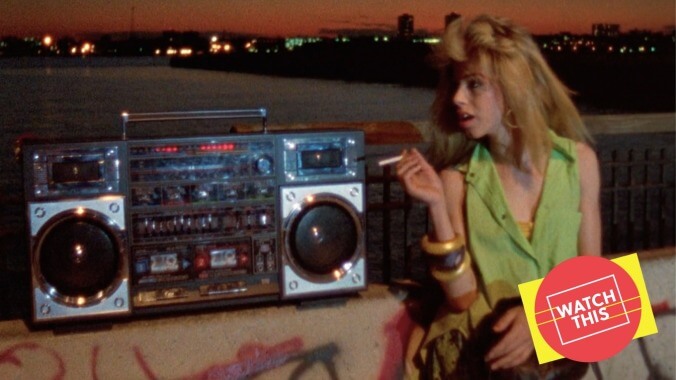30 years ago, Paris Is Burning changed popular culture but not the lives of its subjects

Watch This offers movie recommendations inspired by new releases, premieres, current events, or occasionally just our own inscrutable whims. This week: It’s the start of Pride Month, so we’re looking back at some major or influential highlights of queer cinema.
Paris Is Burning (1990)
The simple fact that “throwing shade” has been added to the dictionary makes a compelling argument for Paris Is Burning as one of the most influential pieces of media of the past century. Disseminated through populist vehicles like RuPaul’s Drag Race—where the host often quotes the film verbatim—drag terms like “tea,” “serve,” “gagging,” and “reading” have entered the American pop cultural mainstream in the 30 years since Jennie Livingston’s documentary on New York City’s Black and Latinx ballroom scene debuted at the Toronto International Film Festival. But who’s benefitted from this cultural shift? Certainly not the queer and trans people of color who introduce the terms in such an infectiously entertaining fashion in the film.
The debate over Paris Is Burning is nothing new. Dissent from the film’s subjects began almost immediately after its release, eventually culminating in a response documentary called How Do I Look? in 2006. Participants said that Livingston, a white lesbian, was a cultural tourist who took advantage of the moment. In a 1993 New York Times article titled “Paris Has Burned,” Pepper LaBeija expresses feelings of betrayal: “When Jennie first came, we were at a ball, in our fantasy, and she threw papers at us… she told us that when the film came out we would be all right… But then the film came out and—nothing.” That same article sees Livingston defending herself by saying she paid out $55,000 to 13 of the film’s subjects in 1991, and didn’t get rich besides.
Regardless of your stance on the controversial topic of paying documentary subjects for interviews, it’s undeniable that, for the drag queens, expert voguers, and transgender women profiled in Paris Is Burning, whatever boost they did get was temporary. Shortly before the film was released, Madonna hired two members of the House of Xtravaganza as dancers on her Blonde Ambition tour, and the movie’s box office and critical success did lead to bookings here and there. But to the white, wealthy high-fashion elite, ball culture was just a trend. For Octavia St. Laurent, the aspiring model whose life story provides the inspiration for Pose’s Angel Evangelista—minus the mainstream breakthrough—the crossover lasted for exactly one gig before she returned to dancing behind glass at a Times Square peepshow. She died in 2009.

 Keep scrolling for more great stories from A.V. Club.
Keep scrolling for more great stories from A.V. Club.